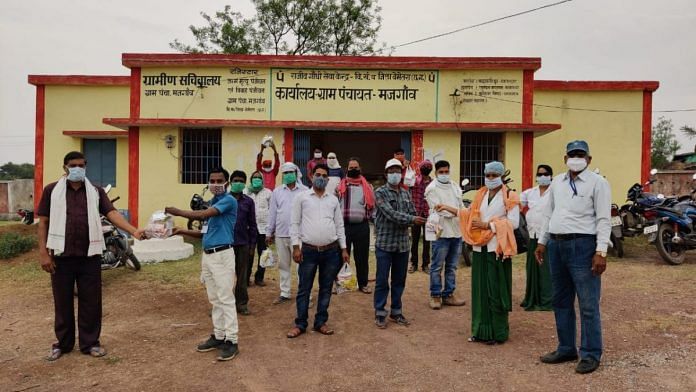New Delhi: The deadlier second wave of the Covid-19 pandemic is fast spreading to rural districts, with nearly half of the new cases coming from rural areas, according to economists.
While estimates vary about the spread in rural districts, their share in overall cases is nearing the highs seen in July-August last year.
But more worryingly, the overall Covid cases in India in the second wave have risen by over 300 per cent. This means that rural areas are seeing a deluge in cases without the necessary health infrastructure.
Many of these rural districts lack medical infrastructure to tackle the pandemic that has even brought cities like Delhi, which boast a medical infrastructure, to their heels.
To be sure, anecdotal evidence shows that many cases may be going unrecorded in villages in states like Uttar Pradesh and Bihar where lack of testing may be leading to undercounting of new cases.
According to the 15th Finance Commission estimates, per capita health expenditure in these two states was the lowest among Indian states in 2018-19.
Also read: How Wall Street giants are being hit by India’s brutal Covid wave
‘Worrying trend’
In a report dated 7 May, SBI research flagged that the increase in rural penetration is a “worrying trend”.
The share of rural districts in new cases increased to 45.5 per cent in April and 48.5 per cent in May compared to around 37 per cent in March, said the report, authored by group chief economic adviser Soumya Kanti Ghosh.
According to SBI Research’s previous estimates, the share of rural districts in new cases had peaked in August 2020 at nearly 54 per cent before falling gradually over the months. However, this spiked again in April.

SBI estimated that among the top 15 worst hit rural districts, six are from Maharashtra, five from Andhra Pradesh, two from Kerala and one each from Karnataka and Rajasthan.

Rating agency Crisil echoed SBI’s concerns. “More worrying signs. Hitherto considered an urban phenomenon, the second wave is closing in on rural India. The share of predominantly rural districts in new cases in April was 30%, up from 21% in March. This is still lower than the peak reached in the first wave (at 40% in August 2020),” the agency said in a report dated 3 May.
The difference in estimates between the two firms can be attributed to how the rural districts have been selected.
“In rural areas, lockdowns are not relevant as they are difficult to implement,” said D.K. Srivastava, chief policy adviser at EY, pointing out that these areas also lack adequate health infrastructure including testing facilities.
“Economic activities would still continue in rural areas even as Covid cases may increase. But the spread in the rural areas should not be as explosive as seen in urban areas due to the relatively low population density in villages,” he said.
However, people in rural areas impacted by Covid may still need to go to towns to get tested and treated, he added.
RBI, govt remain optimistic
The Reserve Bank of India (RBI) and the Narendra Modi government have both been optimistic that the rural economy will withstand the onslaught of the pandemic.
Earlier this week, RBI Governor Shaktikanta Das said that the record foodgrain production and buffer stocks in 2020-21 provide food security and support to other sectors of the economy in the form of rural demand, employment and agricultural inputs and supplies, including for exports.
The forecast of a normal monsoon by the Indian Meteorological Department is expected to sustain rural demand and overall output in 2021-22, he added.
The Ministry of Finance, in its monthly economic review for April released Friday, echoed the RBI’s view. It said agriculture continues to be the silver lining with record foodgrain production estimated in the ensuing crop year on the back of predicted normal monsoons. It added that rural demand indicators remain robust.
Also read: Here’s what more RBI can do to help Indian economy as Covid rages on



